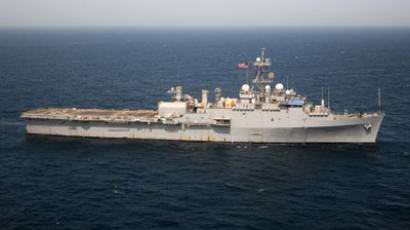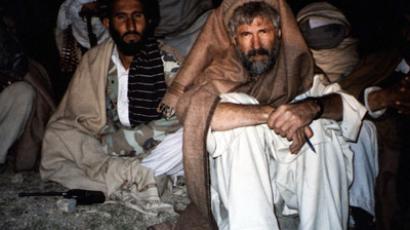Growing gulf: Iran deploys Russian made sub as tensions rise

Days after the US and 30 other nations began naval exercises in the Persian Gulf; Tehran has announced it is sending a Russian submarine to bolster its forces in the area.
The Taregh-1, one of three Russian built Kilo class submarines, was sent to the southern port of Bandar Abbas, after completing a refit earlier this year. The deployment comes as Iran strengthens its naval forces in the region. A destroyer, the Sahand, has also been launched after an overhaul and is expected to be ready for operations in the near future. The country’s Supreme leader, Ayatollah Khameni, who has command of all military affairs, said that Iran has no intention of attacking another nation. “The armed forces should be upgraded in such a way that no one will be able to violate the reinforced fortress of Iran,” Khameni said Tuesday whilst visiting a naval base in the northern Iranian port of Noshar. The Iranian deployment comes two days after US led anti-mine sweeping exercises got underway in the Persian Gulf. 30 countries are participating in the maneuvers and today three British warships joined the armada. Other countries taking part include Saudi Arabia and France. They are being interpreted as a show of force, warning Tehran not to disrupt vital oil routes in the Strait of Hormuz. 18 million barrels a day, some 35 percent of the world’s oil shipments, pass through the 21 mile wide channel every day.
Bluster or Bluff?
The UK defense Secretary Phillip Hammond stressed the underlying reason and timing for the exercise: “The UK is committed to a presence in the Gulf to ensure freedom of navigation in international waters such as the Strait of Hormuz, disruption to sailing in the strait would threaten regional and economic growth. Any attempt by Iran to do this would illegal and unsuccessful.” American officials insist that the exercise is entirely defensive in nature and not directed at any particular country. The US has amassed a large naval presence in the area including three aircraft carriers, with a fourth potentially on its way, which have more air power than the entire Iranian air force. The drill comes at a very sensitive time for the region amid the diplomatic war of words over Iran’s nuclear ambitions and the threat of Israeli airstrikes. Middle east expert and author, Tariq Ali, told RT that in the event of an Israeli or US attack, Iran would retaliate by launching offensives on several fronts.“They are basically saying that they could open new fronts in Afghanistan, they could open up new fronts on the frontiers of Iraq and they could unleash Hezbollah on Israel and so it would not be simply an air war, it would be a war that they would fight on three or four different fronts and the United States is aware of this,” He said.But he doubts whether the latest round of sabre rattling between Iran and the west means an attack is imminent.“When the Israelis normally decide to carry out an attack, they don’t announce it before hand; I mean this was the case before they destroyed the nuclear reactor in Iraq. So whether this is still rocket rattling or something more serious remains to be seen,” He said.














